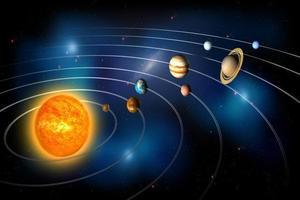13043727
UNIT 3.2 - GENERATING ELECTRICITY
Resource summary
| Question | Answer |
| What does non-renewable energy mean? | Non-renewable energy comes from sources that will either run out and cannot be easily replaced. |
| Name 3 non-renewable energy sources. | Most non-renewable energy sources are fossil fuels eg: coal, oil, and gas. |
| What does renewable energy mean? | Renewable energy is energy obtained from sources which will not run out, or can be quickly replaced (eg: biofuels). |
| Name 3 renewable energy sources. | Renewable energy sources include: sunlight, wind, rivers, tides, waves, biofuels and geothermal heat. |
| Most coal, oil, and gas power stations are due to close in the near future. Give 2 reasons why? | 1. Fossil fuels are non-renewable and will therefore run out soon. 2. Burning fossils fuels releases carbon dioxide (a greenhouse gas) into the atmosphere, causing global warming. |
| Describe what happens at points 1 to 4 in a coal fired power station. | 1. Water is turned into steam in the boilers. 2. The steam drives the turbines. 3. The turbines spin the generators, which produce the electricity. 4. Transformers convert the electricity to the correct voltage so it can transported via the national grid. |
| Why can’t we always rely on solar energy and wind energy to produce our electricity needs? | We cannot rely on solar energy to produce our electricity needs at night time and we cannot rely on wind energy as it is not windy all of the time. |
| What does 'sustainability' mean? | Sustainability is about using energy resources in a way that will not harm the ability of people in the future to meet their own energy needs. |
| Describe two ways we can be sustainable. | 1. Use renewable energy sources. 2. Use energy efficiently eg: - turn off house lights when not in use - insulate homes |
| What does ‘carbon footprint’ mean? | Carbon footprint is a measure of the activities which release greenhouse gases (especially carbon dioxide) into the environment. The carbon footprint is the amount of carbon dioxide released into the atmosphere as a result of the activities of a particular individual, organisation, or community. |
| Methane is a gas released when cows belch. A Welsh cow releases about 92.4kg of methane gas per year. Calculate the mass equivalent of carbon dioxide in units of kgCO2eq using the equation: mass equivalent of carbon dioxide (kgCO2eq) = (mass of gas) × (global warming potential) [The global warming potential of methane is 21] |
The carbon dioxide equivalent tells us that releasing 1 kg of CH4 into the atmosphere is equivalent
to releasing 21 kg of CO2.
We can convert the mass of any gas into the carbon dioxide equivalent using:
mass equivalent of carbon dioxide =
(mass of gas) × (global warming potential)
mass equivalent of carbon dioxide =
92.4 × 21 =
1,940.4 kgCO2eq
Image:
Cow (binary/octet-stream)
|
| What is the National Grid? | The National Grid is a network of structures that connects all generators of electricity, such as power stations, with all users, such as homes, offices and factories. |
| Describe the role of step-up and step down transformers. | Transformers are used to change the size of the voltage. Step-up transformers are used at power stations to produce the very high voltages needed to transmit electricity through the National Grid power lines. These high voltages are too dangerous to use in the home, so step-down transformers are used locally to reduce the voltage to safe levels. |
|
Why is electricity transported at very high voltages through the National Grid power lines?
Image:
Pylons (binary/octet-stream)
|
Whenever a current flows through a wire some of the energy is lost as heat. The higher the current, the more heat is lost. In order to reduce these energy losses, the National Grid transmits electricity at a low current and a high voltage. |
| Describe what happens to the demand for electricity from 14:00 to 18:00 and suggest a reason for this. | From 14:00 to 18:00 the demand for electricity increases. One reason for this could be people returning home from schools, colleges and work and turning on TV's, kettles, cookers, washing machines and central heating systems. |
| What is meant by the term ‘payback time?' | Payback time is the amount of time an energy-saving solution will take to 'pay for itself' from the energy bill savings made. For example, if a homeowner installs solar panels, the payback time is how long it will take the homeowner to get back the money they spent to install the panels. |
| Solar panels for Afon Taf High School would cost £30,000 to install. The panels would save the school £2,500 per year in electricity bills. What is the payback time? | payback time = cost of installation ÷ savings per year payback time = 30,000 ÷ 2,500 payback time = 12 years |
Want to create your own Flashcards for free with GoConqr? Learn more.

